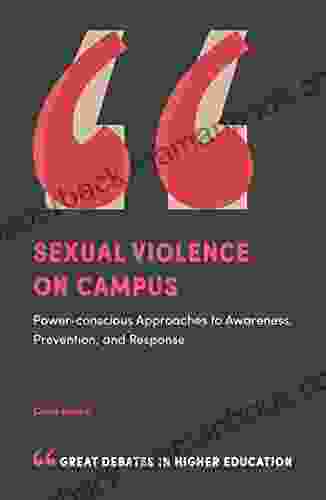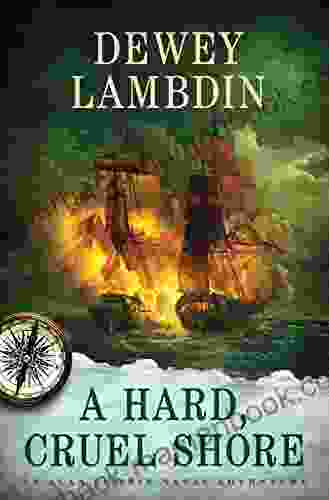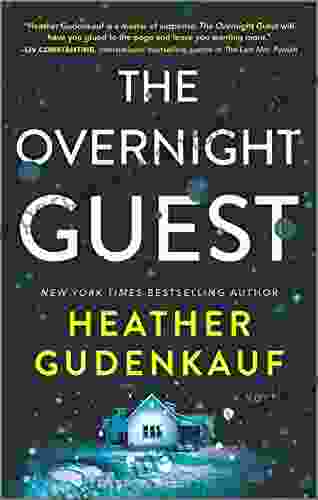Understanding Autism Aggression At Puberty: Travis Breeding's Journey

Puberty is a transformative period for all adolescents, but for those on the autism spectrum, it can also be a time of heightened challenges. One such challenge is aggression, which can manifest in various forms, from physical outbursts to verbal altercations.
In this article, we will explore the complexities of autism aggression during puberty through the lens of Travis Breeding, a young man whose experiences offer invaluable insights into this challenging behavior. We will examine the underlying triggers, the unique challenges faced by individuals with autism, and the potential interventions that can help manage and mitigate aggression.
4.6 out of 5
| Language | : | English |
| File size | : | 1858 KB |
| Text-to-Speech | : | Enabled |
| Enhanced typesetting | : | Enabled |
| Word Wise | : | Enabled |
| Print length | : | 27 pages |
| Lending | : | Enabled |
| Screen Reader | : | Supported |
Travis Breeding's Story
Travis was diagnosed with autism at the age of three. Throughout his childhood, he struggled with social communication difficulties and sensory sensitivities. As he entered puberty, his aggression escalated, causing significant distress to both himself and his family.
Travis's aggression often manifested in physical outbursts, such as hitting, kicking, and throwing objects. He would also engage in verbal altercations, using hurtful and inappropriate language. These outbursts were triggered by a combination of factors, including sensory overload, social misunderstandings, and emotional dysregulation.
Triggers of Aggression in Autism
Identifying the triggers of aggression is crucial for developing effective interventions. In individuals with autism, aggression can be triggered by a wide range of factors, including:
- Sensory overload: Individuals with autism may be hypersensitive to certain sensory stimuli, such as loud noises, bright lights, or strong smells. When these stimuli overwhelm their senses, it can lead to aggression as a way of coping.
- Social misunderstandings: Individuals with autism may struggle to understand social cues and interactions. Misinterpretations and misunderstandings can lead to frustration and aggression.
- Emotional dysregulation: Individuals with autism may have difficulty regulating their emotions. Intense emotions, such as anger or frustration, can lead to impulsive and aggressive behavior.
- Frustration: Individuals with autism may experience frustration due to their difficulties with communication, social interaction, or sensory processing. This frustration can manifest as aggression if they are unable to express themselves effectively.
- Environmental factors: The environment can also play a role in triggering aggression. Factors such as overcrowding, lack of structure, or unpredictable routines can contribute to stress and increase the likelihood of aggressive behavior.
Challenges Faced by Individuals with Autism
Individuals with autism face unique challenges that can contribute to aggression during puberty. These challenges include:
- Difficulty understanding and expressing emotions: Individuals with autism may have difficulty identifying and expressing their emotions verbally. This can lead to frustration and aggression as they struggle to communicate their needs and feelings.
- Problems with social interaction: Individuals with autism may struggle to understand and interact with others in socially appropriate ways. This can lead to misunderstandings and conflict, which can trigger aggression.
- Sensory sensitivities: Individuals with autism may be hypersensitive to certain sensory stimuli, such as loud noises, bright lights, or strong smells. These stimuli can be overwhelming and lead to aggression as a way of coping.
- Cognitive impairments: Individuals with autism may have cognitive impairments that affect their ability to plan, problem-solve, and make decisions. This can lead to impulsive and aggressive behavior.
- Comorbid conditions: Individuals with autism are more likely to have comorbid conditions, such as anxiety, depression, or ADHD. These conditions can exacerbate aggression and make it more challenging to manage.
Potential Interventions for Aggression
There are a range of interventions that can be used to manage and mitigate aggression in individuals with autism during puberty. These interventions include:
- Sensory integration therapy: This therapy can help individuals with autism to process and tolerate sensory stimuli more effectively, reducing the likelihood of sensory overload and aggression.
- Social skills training: This training can help individuals with autism to develop the social skills they need to interact with others in appropriate ways, reducing the likelihood of misunderstandings and conflict.
- Cognitive behavioral therapy (CBT): This therapy can help individuals with autism to identify and challenge negative thoughts and behaviors, leading to more positive and adaptive coping mechanisms.
- Medication: In some cases, medication may be necessary to manage aggression in individuals with autism. Medications such as antidepressants, antipsychotics, and mood stabilizers can help to reduce symptoms of anxiety, depression, and hyperactivity, which can contribute to aggression.
- Environmental modifications: Modifying the environment to reduce triggers and promote a calming atmosphere can be helpful in managing aggression. This may involve reducing noise levels, providing sensory-friendly spaces, and establishing clear routines.
- Positive behavior support (PBS): PBS is a systematic approach to understanding and changing behavior. It involves identifying the antecedents and consequences of aggression and developing strategies to prevent and manage challenging behaviors.
Autism aggression during puberty is a complex and challenging behavior that can have a significant impact on the lives of individuals with autism and their families. By understanding the underlying triggers and challenges, and by implementing appropriate interventions, it is possible to manage and mitigate aggression, empowering individuals with autism to live fulfilling and productive lives.
Travis Breeding's journey is a testament to the resilience and determination of individuals with autism and their families. Through a combination of interventions and support, Travis has learned to manage his aggression and build a meaningful life for himself.
If you are concerned about aggression in an individual with autism, it is important to seek professional help. A qualified therapist or other healthcare professional can help to assess the individual's needs and develop an appropriate treatment plan.
References
- American Psychiatric Association. (2013). Diagnostic and statistical manual of mental disorders (5th ed.). Arlington, VA: American Psychiatric Association.
- Autism Speaks. (2022). Aggression in Autism Spectrum Disorder. Retrieved from https://www.autismspeaks.org/aggression-autism-spectrum-disorder
- National Autism Association. (2022). Aggression in Autism. Retrieved from https://nationalautismassociation.org/resources/aggression-in-autism/
- National Institute of Mental Health. (2022). Autism Spectrum Disorder. Retrieved from https://www.nimh.nih.gov/health/topics/autism-spectrum-disorder-asd/index.shtml
- Smith, T. (2020). Aggression in Autism: A Guide for Parents and Professionals. Jessica Kingsley Publishers.
4.6 out of 5
| Language | : | English |
| File size | : | 1858 KB |
| Text-to-Speech | : | Enabled |
| Enhanced typesetting | : | Enabled |
| Word Wise | : | Enabled |
| Print length | : | 27 pages |
| Lending | : | Enabled |
| Screen Reader | : | Supported |
Do you want to contribute by writing guest posts on this blog?
Please contact us and send us a resume of previous articles that you have written.
 Top Book
Top Book Novel
Novel Fiction
Fiction Nonfiction
Nonfiction Literature
Literature Paperback
Paperback Hardcover
Hardcover E-book
E-book Audiobook
Audiobook Bestseller
Bestseller Classic
Classic Mystery
Mystery Thriller
Thriller Romance
Romance Fantasy
Fantasy Science Fiction
Science Fiction Biography
Biography Memoir
Memoir Autobiography
Autobiography Poetry
Poetry Drama
Drama Historical Fiction
Historical Fiction Self-help
Self-help Young Adult
Young Adult Childrens Books
Childrens Books Graphic Novel
Graphic Novel Anthology
Anthology Series
Series Encyclopedia
Encyclopedia Reference
Reference Guidebook
Guidebook Textbook
Textbook Workbook
Workbook Journal
Journal Diary
Diary Manuscript
Manuscript Folio
Folio Pulp Fiction
Pulp Fiction Short Stories
Short Stories Fairy Tales
Fairy Tales Fables
Fables Mythology
Mythology Philosophy
Philosophy Religion
Religion Spirituality
Spirituality Essays
Essays Critique
Critique Commentary
Commentary Glossary
Glossary Bibliography
Bibliography Index
Index Table of Contents
Table of Contents Preface
Preface Introduction
Introduction Foreword
Foreword Afterword
Afterword Appendices
Appendices Annotations
Annotations Footnotes
Footnotes Epilogue
Epilogue Prologue
Prologue Nancy Lawson
Nancy Lawson Kim Pearson
Kim Pearson Jason J Cross
Jason J Cross Maria Hantzopoulos
Maria Hantzopoulos Peter Inglis
Peter Inglis Kc Luck
Kc Luck Liliana Hart
Liliana Hart Buzz Campion
Buzz Campion Tom Spence
Tom Spence Talya Rubin
Talya Rubin Sara Rosett
Sara Rosett J T Lewis
J T Lewis Daniel Immerwahr
Daniel Immerwahr C S Harris
C S Harris Toks Insider
Toks Insider Kate Elizabeth Russell
Kate Elizabeth Russell Lisa Hedberg
Lisa Hedberg Hannah Shield
Hannah Shield Daniele Vacca
Daniele Vacca Cindy Watson
Cindy Watson
Light bulbAdvertise smarter! Our strategic ad space ensures maximum exposure. Reserve your spot today!

 Dominic SimmonsPower Conscious Approaches to Awareness, Prevention, and Response: Great...
Dominic SimmonsPower Conscious Approaches to Awareness, Prevention, and Response: Great... Stanley BellFollow ·19.2k
Stanley BellFollow ·19.2k Hugo CoxFollow ·2.2k
Hugo CoxFollow ·2.2k Bernard PowellFollow ·15.1k
Bernard PowellFollow ·15.1k Milton BellFollow ·15.5k
Milton BellFollow ·15.5k Cristian CoxFollow ·16.7k
Cristian CoxFollow ·16.7k Ian PowellFollow ·10.6k
Ian PowellFollow ·10.6k Hassan CoxFollow ·12.6k
Hassan CoxFollow ·12.6k Angelo WardFollow ·19.6k
Angelo WardFollow ·19.6k

 Jeremy Mitchell
Jeremy MitchellPlay We Now On Christmas Violin Christmas: A Heartfelt...
Play We Now On...

 Terry Bell
Terry BellTales from the Road: Confessions of an Atlanta Uber...
In the vibrant...

 Ervin Bell
Ervin BellThe French Admiral: A Gripping Naval Adventure with Alan...
In the vast expanse of...

 Henry David Thoreau
Henry David ThoreauCrochet Cozy Afghan Patterns: Crochet Weekend Afghan...
to Crochet...

 Orson Scott Card
Orson Scott CardAn Archaeological View Of The Industrialization Of North...
The industrialization of North America was a...

 Josh Carter
Josh CarterClipboard Christmas Skits by Tom Spence: A Festive...
A Christmas...
4.6 out of 5
| Language | : | English |
| File size | : | 1858 KB |
| Text-to-Speech | : | Enabled |
| Enhanced typesetting | : | Enabled |
| Word Wise | : | Enabled |
| Print length | : | 27 pages |
| Lending | : | Enabled |
| Screen Reader | : | Supported |









